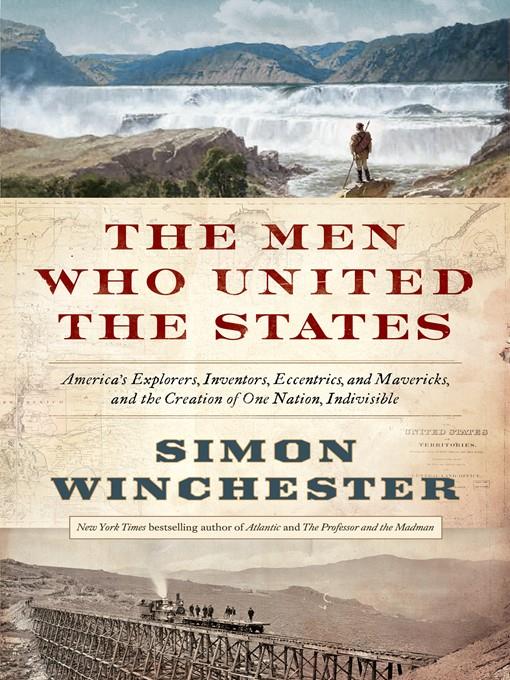
The Men Who United the States
America's Explorers, Inventors, Eccentrics and Mavericks, and the Creation of One Nation, Indivisible
کتاب های مرتبط
- اطلاعات
- نقد و بررسی
- دیدگاه کاربران
نقد و بررسی

July 15, 2013
Winchester’s latest history profiles a huge cast of eclectic characters who helped transform America from a cluster of colonies to a unified nation through the taming of the wilderness and the expansion of the country’s infrastructure. The sweeping narrative is cleverly organized into five sections—each corresponds to one of the classical elements (wood, earth, water, fire, metal) and focuses on a different phase of American exploration or development. Winchester (The Alice Behind Wonderland) masterfully evokes the excitement of the nation’s early days—when opportunity and possibility were manifest in uncharted mountains and new technologies—while bringing each of his subjects to life. Some, like Lewis and Clark, are familiar, while others—like the many topographers who set down the Mexican and Canadian boundaries—are more obscure, but no less interesting. Winchester, a Brit who recently became an American citizen, also incorporates personal travel anecdotes to comment on pivotal locations. This bold decision is the key to the book’s greatest achievement: conveying the large-scale narrative of unification via the small-scale experience of the individual—the creation of a people by the agglomeration of persons. Illus. and maps.

September 15, 2013
Popular historian and prolific author Winchester (The Professor and the Madman) focuses on the history of his adopted country and the individuals who contributed to its functioning as a cohesive whole. He organizes what are for the most part biographical sketches thematically, yet chronologically, in five sections named for elements: "Wood," "Earth," "Water," "Fire," and "Metal." Under this scheme, the immense Eastern Woodlands forest offers the first unifying context, as Winchester writes about the trip across the continent by Lewis and Clark and their Shoshone guide Sacagawea. Next, "Earth" includes efforts of pioneering geologist William Maclure, his 1809 geologic map of the Appalachian Mountains, and its unifying scientific impact. "Water" transportation routes include the creation of the Erie Canal and those who championed its economic importance to local businessmen, such as flour merchant Jesse Hawley. Robert Fulton's steam engine used "Fire" to make railroads practical and efficient. "Metal" stitched together the country through Samuel Morse's use of telegraph wires to increase the speed of communication; FDR brought electricity to rural America over the objections of power companies. VERDICT Along the way, Winchester provides surprising insights into our social history, further enriching his narrative with accounts of his personal odysseys around the country. The results are highly recommended for public and school libraries and all readers looking for new and stimulating perspectives on the history of America. [See Prepub Alert 4/1/13.]--Nathan Bender, Albany Cty. P.L., Laramie, WY
Copyright 2013 Library Journal, LLC Used with permission.

























دیدگاه کاربران